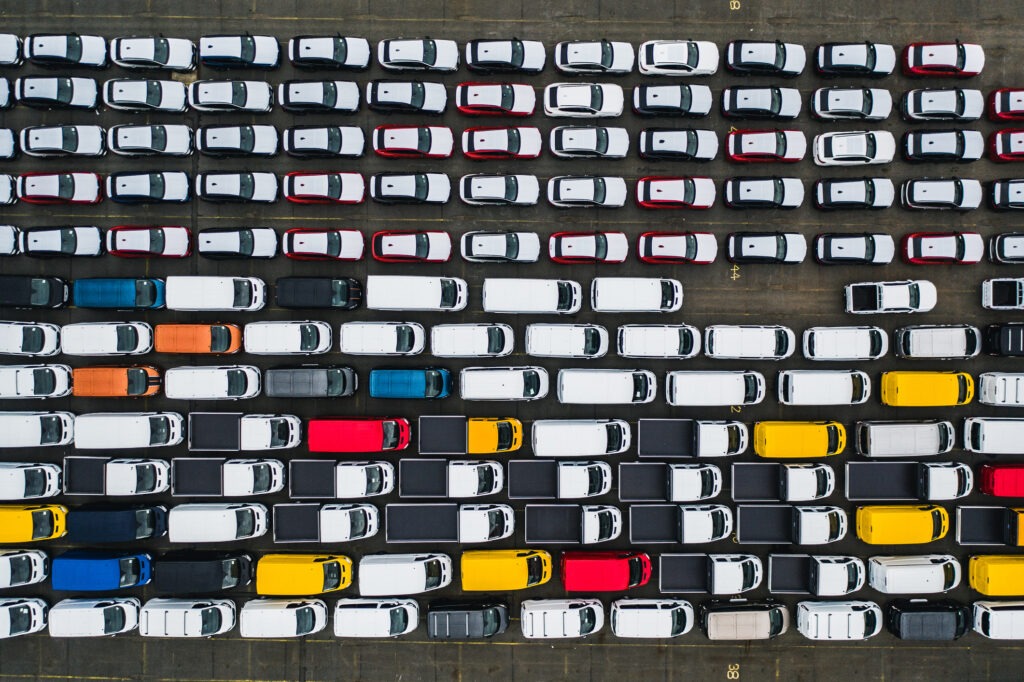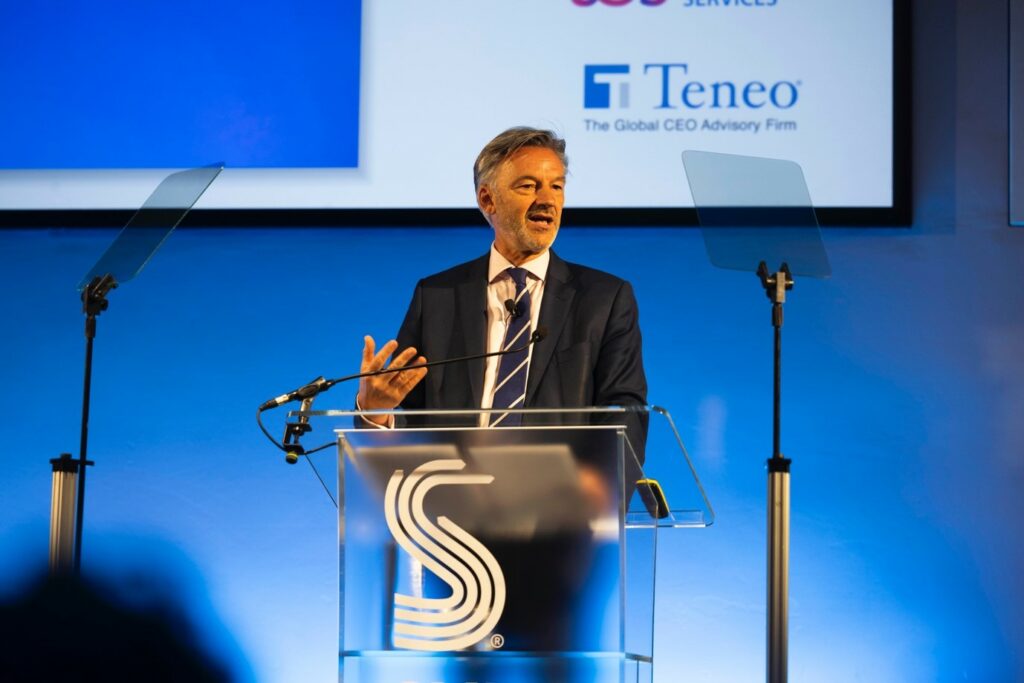Why Rules of Origin is causing problems for Europe’s automotive market
26 July 2023

A new deadline is looming for carmakers in the UK and EU. If missed it could see tariffs imposed on vehicles in a threat not seen since the conclusion of Brexit negotiations. Autovista24 special content editor, Phil Curry, examines the issues around Rules of Origin.
When the Brexit agreement was signed in 2019, the automotive market rejoiced at what was thought to be the end of a long era of challenges, when uncertainty around tariffs reigned. Four years later, the threat of import charges has returned, thanks to complications around Rules of Origin.
The EU-UK Trade Cooperation Agreement (TCA) was signed in December 2020 and became active in May 2021. Within it is legislation on the Rules of Origin, which covers a number of different products, including vehicles.
The Rules of Origin chapter in the TCA states that 55% of a vehicle’s value must be made up of locally sourced components. This applies to the UK and the EU specifically, so EU parts in a UK-built car would not count. Should the value of a vehicle’s locally sourced components fall short of 55% of the total, then an import tariff of 10% will be applied.
For internal-combustion engine (ICE) vehicles, this is not a problem as their supply chains have been established over a number of years. Both the UK and EU have strong domestic suppliers that can keep the percentage value higher than is required under the Rules of Origin legislation.
Electric vehicles (EVs) however, pose a different challenge. They are an emerging technology, and as such, carmakers are reliant on sourcing components from wherever they are available, with patchy localised supply sources.
Negotiators realised this and inserted a clause into the TCA designed to benefit EVs and give carmakers time to build up the required networks, by creating steps that build up to standard vehicle compliance. Therefore, until 1 January 2024, only 40% of an EV’s value needs to be made up of localised parts, rising to 45% after this date until 31 December 2026. The 55% requirement will begin at the start of 2027.
Additionally, an EV will be treated like any other item that contains a battery, by including separate steps towards specific requirements for batteries. This is particularly helpful as the battery makes up a significant portion of an EV’s value, especially a battery-electric vehicle (BEV).
So, a battery does not have to be sourced entirely locally to qualify as a component under Rules of Origin. Instead, up until the start of 2024 just 30% of both the battery cell and pack need to be localised. This increases to 50% for the battery cell and 60% for the pack until the end of 2026. From 1 January 2027, EV batteries will need to reach parity with standard battery targets of 65% in the cell, and 70% in the pack.
Difficult targets to reach
These targets were seen as achievable during TCA negotiations, which started in March 2020. At the time, the market for EVs was still emerging and BEV sales were low, recording just 247,497 registrations in the EU and 37,850 in the UK by the end of 2019. Carmakers would have time to increase the necessary supply chains as sales grew gradually.
Since then, things have changed. Firstly, the COVID-19 pandemic took hold, shutting down markets, restricting travel and impacting carmaker profits. It also led to awareness that longer journeys are not always required, meaning more consumers and businesses turned to EVs.
At the end of 2020, the UK Government confirmed plans to ban the sale of new petrol and diesel vehicles from 2030. This changed the plans of carmakers who needed to ensure their EV programmes would develop in time. In addition, emissions regulations were tightened, meaning carmakers needed to quickly develop zero-emission vehicles to help them meet requirements, especially with vehicle development taking years to reach fruition.
Suddenly, carmakers were in a race to ramp up their EV supply chains. The semiconductor crisis compounded this issue, reducing production and forcing manufacturers to cast a wider net for components. The idea of a localised supply chain took a back seat, as establishing requirements for a rapidly expanding market was a priority.
‘The trading cooperation agreement was agreed a number of years ago,’ stated Ben Gardner, senior associate at law firm Pinsent Masons, at the SMMT International Autmotive Summit. ‘If we look at how much the world has changed since then, we have had a pandemic, we have seen the start of a war, there has been a number of issues and external factors that are affecting the roadmap that we agreed to over three years ago.’
Concerns rising over batteries
But with the next phased step for EVs and batteries looming, carmakers are concerned they will not meet the required conditions, resulting in tariffs. Both the Society of Motor Manufacturers and Traders (SMMT) and the European Automobile Manufacturers’ Association (ACEA) have been lobbying for changes to the TCA to protect the interests of carmakers.

‘Our most important relationship is with the EU,’ commented Tim Slatter, chair of Ford of Britain and Ireland at the SMMT International Automotive Summit. ‘We have a trade cooperation agreement which is fabulous, a result of post-Brexit negotiation, and within that, there is the Rules of Origin agreement, which was architected three or four years ago, and it comes into effect next year.
‘It means that a large proportion of battery-electric vehicles must be produced either in the EU or the UK. There are very specific regulations for the battery itself, and it is difficult for the industry to meet those requirements within this timeframe.’
Currently, there are only a handful of gigafactories operating in the EU, while the UK only has one in Sunderland, supplying batteries for the Nissan Leaf. There have been around 50 gigafactory announcements in Europe so far, while four are being developed in the UK, including the recently announced JLR project. Yet it will be some time before these are fully operational.
Speaking at the recent MOVE 2023 event in London, Lars Carlstrom, CEO of Italvolt and Statevolt, stated that it can take 18 months to build a gigafactory from the ground up, followed by 15 months to reach full production capacity. With the time taken to secure various permits and permissions, it could be three years before a gigafactory is ready to meet its supply requirements.
He also said that a gigafactory such as Italvolt’s could supply up to 400,000 EVs once it reaches production capacity, meaning at least 20 sites would be needed to meet EU car-production levels.
With carmakers ramping up EV production, it is unlikely the required battery levels will be met with existing UK and EU gigafactories. It is also impossible to build enough gigafactories before the 1 January deadline when percentage value requirements under Rules of Origin will rise.
In a submission to a UK Parliament committee inquiry into the supply of EV batteries for manufacturing in the UK, Stellantis also warned of the dangers posed by the current Rules of Origin requirements.
‘There will not be sufficient battery production supplies in the UK or in Europe by 2025 and 2030, despite the fact this is key to meet the Trade and Cooperation Agreement under the current Rules of Origin,’ the carmaker said. ‘If we are unable to rely on sufficient UK or European batteries, we will be at a major competitive disadvantage. If we do not produce in the UK or in Europe, we will be faced with 10% import duties which will make domestic production uncompetitive against Asian players.
‘If we continue to source batteries from mainland Europe and China our UK Stellantis plants will be at a competitive disadvantage due to the higher logistics costs that we will face to transport the batteries from mainland Europe to the UK. These costs will add to the Total Cost of Ownership of a battery-electric vehicle, alongside potential tariff costs from Rules of Origin, high running costs due to the cost-of-living crisis, costs that will be passed onto the consumer.’
Materials sourcing
Battery production is one problem under Rules of Origin, but sourcing materials to put into the cells is also an issue. Currently, the majority of raw materials come from Asia, where many gigafactories are located. The cost of shipping one component is smaller than shipping various materials, meaning locating production close to raw materials makes sense.
‘While the focus on localising battery production is a priority, the UK should not lose sight of the tightening material sourcing requirements outlined in the TCA Rules of Origin for EVs,’ the Advanced Propulsion Centre stated in its submission to the BEIS Committee. ‘From January 2024, the Rules of Origin are clear that using UK or EU-made batteries alone will no longer qualify an EV for tariff-free trade with the EU.
‘The Cathode Active Material (CAM) that is used in batteries should also be processed and sourced from the UK or EU for tariff-free trade of EVs, or at least 50% of the material value in each battery cell has to be sourced from UK or EU production, which is very challenging to achieve without originating CAM,’ it added.
According to The Faraday Institution, cathode manufacturing makes up 54% of the cost of a battery cell. Within this cost, a significant proportion is attributable to the import of raw materials such as lithium, nickel, and cobalt. However, as long as the cathode manufacturing process is located in the UK or the EU, the overall value would count towards the Rules of Origin thresholds.
Slatter expanded on the materials issue. ‘Ford will be making eight electric vehicles in Europe for the European market. All of those batteries will be produced in Europe or the UK, but they will still not meet the regulations under Rules of Origin. That is because what matters is what goes inside the battery, specifically the cathode active material, which is about 50% of the value of the cell. This becomes the responsibility of tier two and tier three suppliers to develop in a chemical plant, and that is just not ready now.’
The impact of tariffs
With an increasing demand for EVs in both markets, these cars are now frequently imported between parties. Should tariffs of 10% be introduced, it is likely the costs will be passed on to the consumer, as was discussed prior to the signing of the TCA.

‘Obviously, we need tariff-free access to global markets for British products, especially EVs,’ Mike Hawes, SMMT chief executive, told selected press, including Autovista24, at the SMMT International Automotive Summit. ‘But we also need partnerships with mineral-rich countries to get the raw materials we need for UK production. Around 80% of what we produce in the UK is exported, and over half of this to the EU.’
Hawes went on to outline the value involved in this movement. ‘Exports of UK-built electrified cars to the EU were worth £5.6 billion last year alone, and that is twice the value now of internal combustion engines.’
ACEA believes tariffs could total €4.3 billion between 2024 and 2027, potentially reducing EV production by 480,000 units. It stated that members expected a compliance rate of just 10% for the 2024 EV step, rising to 30% by 2026, due to the battery Rules of Origin requirements.
‘There has been massive investment in the European battery supply chain, but time is needed to build up the required capacity,’ stated ACEA’s director general, Sigrid de Vries. ‘In the meantime, vehicle manufacturers must rely on battery cells or materials imported from Asia.’
‘Massive investment by OEMs in the European battery industry has happened but it will take time for production to materialise and to scale up to the extent necessary,’ de Vries added in a letter to the EU Commission. ‘Ultimately, contracts for the supply of batteries in the period 2024-2026 have already been concluded, in many cases before the TCA was completed.’
Hopes for cooperation
The collective automotive industry hopes the UK and EU governments can come together to amend the Rules of Origin part of the TCA. The ideal solution, according to both the SMMT and ACEA, is to delay the phasing-in period or abolish it completely, meaning the next step for carmakers would be the 2027 requirements.
‘I think there is some collective common sense needed between the UK and Europe, just to realise that things have moved on and, for our collective good and our ongoing collaboration, we do need to agree a suitable middle ground and some reasonable deadlines for meeting these Rule of Origin targets,’ Gardner said.
‘There seem to be positive rumblings coming out of Brussels, and ACEA wants to push the targets and the deadlines back, but all it takes is one fly in the ointment and we could find ourselves stuck in a really difficult situation,’ he added.
Should a delay be granted, or the 2024 step abolished completely, it will still be difficult for carmakers to meet the Rule of Origin targets. Serious investment in battery manufacturing needs to continue, and government support will be crucial. What is clear is that the ghost of Brexit still haunts the automotive industry, but a united front can provide both respite and an expanded EV supply chain in both the EU and the UK.



